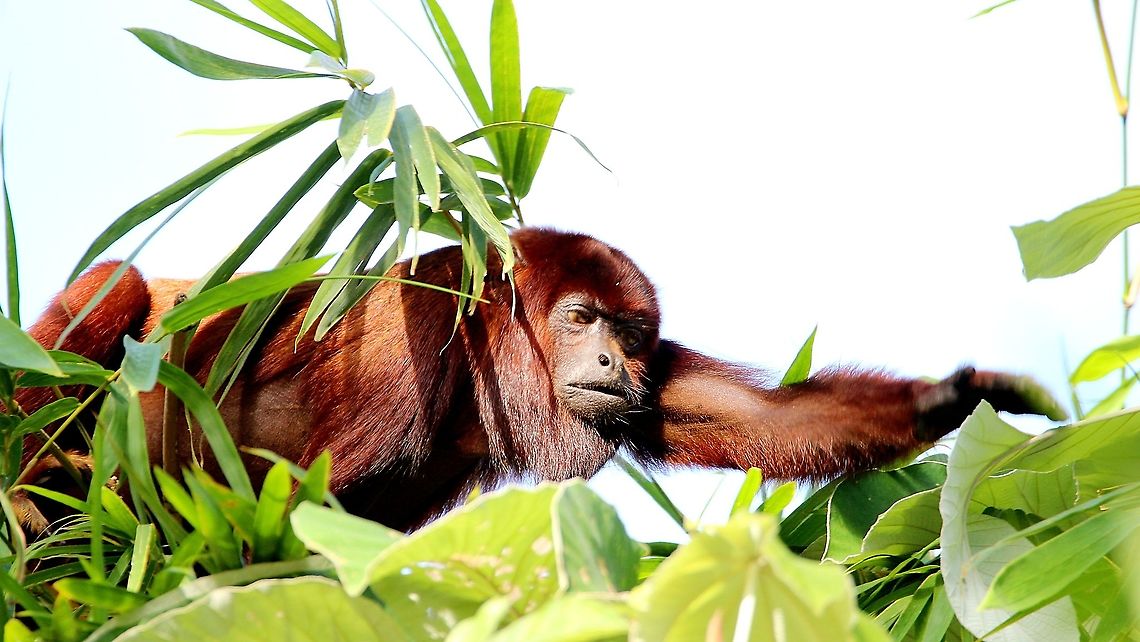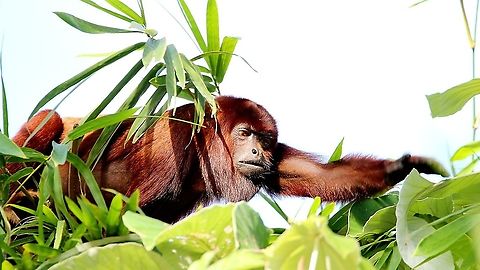 PromotedSpecies introCountry intro
PromotedSpecies introCountry intro
Guyanan Red Howler Monkey (Alouatta macconnelli)
A Guyanan Red Howler Monkey I saw yesterday afternoon on the western side of Trinidad, a place commonly visited for hiking and other outdoor sports. I was really close to the troop of monkeys, around 2 metres away from one of them when someone drove past with their music really loud, prompting the monkey to run away. The encounter was certainly fun while it lasted though!

The Guyanan red howler is a species of howler monkey, a type of New World monkey, native to Suriname, Guyana, Trinidad, French Guiana, Venezuela and Brazil.
Similar species: Primates
By Wesley Goorachan
All rights reserved
Uploaded Sep 20, 2021. Captured Sep 19, 2021 16:57.

comments (14)
I was curious about their howls and found this:
I don't know if the monkey in the video is the same species, but it was very impressive! Posted 4 years ago, modified 4 years ago
An average human conversation registers at 60 decibels (dB). A loud rock concert is about 120 dB. Impressively, the call of a male howler monkey can be as loud as 140 dB, making it one of the loudest land animals on earth!
There are 15 different species of howler monkeys in the genus Alouatta, all of which are native to the rainforests of Central and South America. They are arboreal, social, sedentary, and folivorous -- 75% of their diet consists of leaves with fruit and flowers making up the remainder.
As their common name suggests, howler monkeys howl. Loudly. A male’s guttural, cacophonous call can be heard through the dense jungle for 5 km (3 mi)! Such thunderous noise is shocking, especially considering the average howler monkey only weighs about 7 kg (15 lb). Their vocalizations communicate location, protect territory, and attract mates. Females seem to prefer the males with the deepest howls. A fierce, imposing call suggests that a male is large and would be a good provider and protector.
A male’s vocalizations are produced by his inflatable, resonating throat and enlarged hyoid bone. The bigger the hyoid, the deeper the howl. But, it is an energetically expensive bone to make. Individuals with large hyoids have to compensate by having smaller structures elsewhere. And, here’s where it gets awkward…The larger a male’s hyoid bone, the smaller are his testicles. And, unfortunately, small testicles mean less sperm production. It’s an anatomical trade-off in which they trade testicles for decibels. It’s simply not possible to produce a large hyoid AND large testes. So, deep calls equal small balls.
But, there is some strategy involved. Males with big hyoids and small testicles tend to have small harems in which they are the only male. They have exclusive access to the females and there is no sperm competition. But, males with small hyoids and large testicles live in groups with multiple males. They can afford to live in multi-male troops because they can compete with other males simply by making more sperm, allowing for repeated and hopefully successful mating. {Guyanan Red Howler Monkey (Alouatta macconnelli) spotted in Trinidad and Tobago by Wesley Goorachan} #JungleDragon #Howlermonkey #Alouattamacconnelli
https://www.facebook.com/jungledragonwildlife Posted 4 years ago